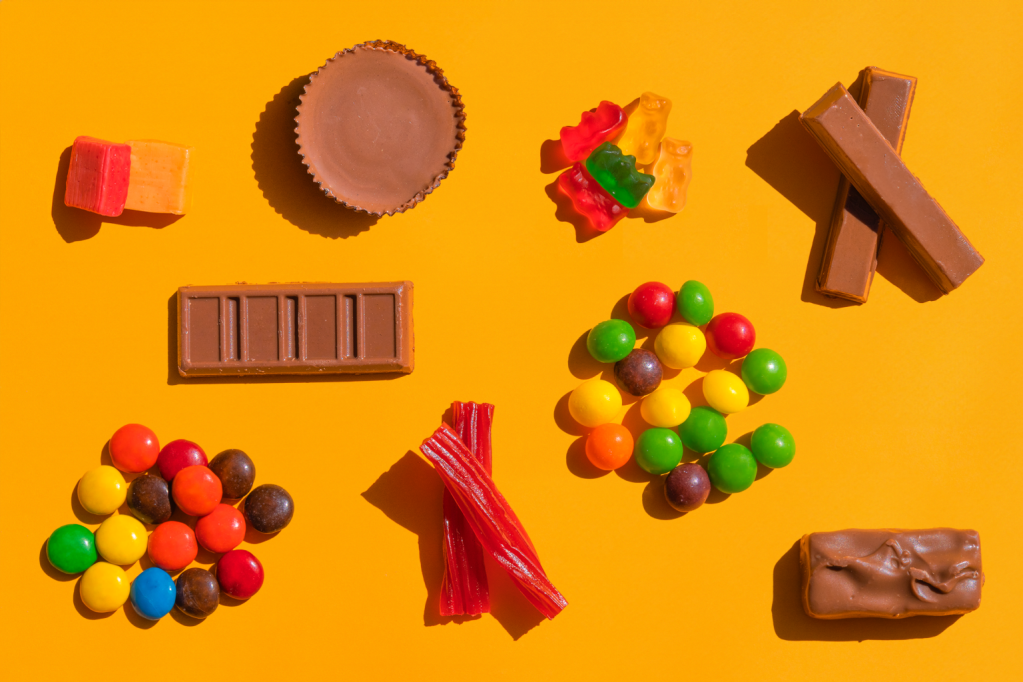How To Tell If Baby Food Uses Heavy Metals?
The use of heavy metals in many baby food brands is alarming news for many and has raised concern among parents and nutritionists alike. While heavy metals are a naturally occurring compound in the soil, they shouldn’t happen in baby food and can be dangerous for health.
Heavy metals contaminating food is not a new problem, but it’s time to get serious about it. Luckily, there are measures to recognize the presence of heavy metals and eradicate them from production to keep your little one safe. Understanding what heavy metals are, where they come from, and how you can protect your little one. Let’s talk about it.

What Are Heavy Metals?
Heavy metals are substances that naturally occur in the soil, but what exactly are they, and how can they impact your little one’s health? Let’s talk about it!
Common Heavy Metals Found in Baby Foods
Four common heavy metals include lead, arsenic, mercury, and cadmium. If you’re wondering if these toxic metals are as dangerous as they sound—the answer is yes.
How Do Heavy Metals Get Into Baby Food?
There are a few ways that heavy metals find their way into baby food. Here are the most common.
Soil
Heavy metals originate from the soil. On top of naturally occurring in the soil, heavy metals from pollution in the air often find their landing spot on the soil. Heavy metals also remain in the environment for extensive periods of time as their chemical structure causes them to break down slowly.
Heavy metals can also be found in the soil due to contaminated water exposure. For example, water run-off from a factory or processing site that uses heavy metals may travel, contaminating soil it comes into contact with.
Manufacturing
During the cooking and handling process, heavy metals can get into baby food. Whether by contaminated water used for cooking or metallic kitchen equipment and utensils, heavy metals can find their way in baby foods. They can also arise from over-processing and using extreme temperatures for cooking baby food ingredients.
Industrial Ignorance
Unfortunately, much of the heavy metal problem is due to the companies in the baby food industry themselves. In the 2021 House of Representatives report on the levels of heavy metals in baby foods, the alarming amounts of heavy metals were linked to the failure of baby food companies to follow regulations.
Instead, many ignored or disregarded the limits and regulations placed on heavy metals in baby food and continued to manufacture and sell products with high amounts in them.
Many companies also failed to test the final product as well as the initial ingredients. While testing the ingredients helps companies know the soil level, most companies don’t test the final product and miss the heavy metals that contaminate foods from kitchen equipment and handling foods.
In addition to this, self-regulated industries set higher levels of heavy metals. Unfortunately, this means they allow dangerous levels and fail to protect your little one’s health by selling toxic products.
Here are some specific examples of how baby food testing showed higher levels of heavy metals than regulations allow. In August of 2020, the FDA set in place regulations limiting the level of arsenic to 100 parts per billion (ppb). Over 25% of products tested from various baby food companies contained more than this amount. Some contained 129 ppb, 309 ppb, and shocking results came back from Beech-Nut that tested as high as nine times this limit at 913 ppb.
How Do Heavy Metals Affect Health?
Heavy metals are not safe for babies. They have been linked to various health issues, including serious developmental problems, immune health, cognitive function, behavioral problems, mental health issues, and hearing problems.
Little ones are even more susceptible to harm from heavy metals than others, so exposure to these toxins from baby foods is even more alarming.

Signs of Heavy Metals in Baby Foods
There are certain things to look for when avoiding heavy metals in baby foods and some tips to keep your child healthy in the process.
Ingredients
The first thing you can do to tell if a baby’s food uses heavy metals is to check the ingredients! There are three main ingredients that are known to be especially high in heavy metals.
Rice
Rice is a convenient food and has long been considered one of the best first foods for babies. However, these recent findings on heavy metal levels in baby foods have also found that rice is particularly efficient at absorbing arsenic. In fact, brown rice contains one of the highest levels of arsenic of all foods.
The FDA offers advice by suggesting alternatives to rice, such as quinoa or oats. Rice is not the only option for your baby’s first foods, so swapping out rice for a replacement can make all the difference.
Soy
Formula mixes for babies that are soy-based contain almost seven times the amount of cadmium than other formulas. This amount is staggering and is a clear suggestion to stay clear of soy-based baby food products.
Fruit Juice
Another alarming source of higher levels of heavy metals is fruit juice. Specifically, apple juice and grape juice have been found to contain worrisome levels of arsenic. Not to mention the high levels of sugar these juices also contain, which can lead to liver damage and heart problems on its own. To sum up—it’s just best to avoid the juices.

Location
Knowing where your baby food is from and what farms the ingredients were grown in is essential because some locations have higher levels of heavy metals in the soil than others. The USDA measures heavy metal levels in the soil each year to keep a close eye on areas that are more at risk of contamination than others and track water run-off contamination of the soil.
By learning where your produce is from and whether there are high levels of heavy metals there, you can tell if there may be heavy metals present in your baby’s food.
We’ve made a map of the metals to help you see where levels of lead, cadmium, and arsenic are highest.

How We Combat Heavy Metals
The reports on heavy metals in baby food were the last straw, so we decided to take some extra measures to remove as many as we could. Here’s how we keep our food heavy metal-free.
1. Regular Testing
The first thing we do is test our food. While some of the major companies only test ingredients, we test both the original ingredients harvested from our farms and the finished product to ensure no heavy metals contaminate the food during the cooking and handling process.
2. Use Heavy Metals-Fighting Ingredient
On top of avoiding the ingredients known to be higher in heavy metals, we incorporate ingredients known to combat heavy metals.
Some foods bind heavy metals in the digestive system and prevent them from being absorbed. These include tomatoes, blueberries, spirulina, and garlic. Other foods serve to block the absorption of lead and promote the absorption of iron instead. These foods include broccoli, kale, beans, kiwi, papaya, and peppers.
By swapping out foods high in heavy metals for foods that fight heavy metals, we take an extra measure to keep the next generation safe and healthy.
3. Avoid Heavy Metals Locations
We also use trusted farms that are USDA-certified organic and perform regular food testing to ensure the absence of heavy metals. This testing is meticulous, and we look at the results and data on soil contamination to find the best farms for our produce.
Other Tips to Avoiding Heavy Metals
Here are some extra tips on how to avoid heavy metals:
- Give your little one a varied diet. By incorporating various fruits, vegetables, and proteins in their diets, you lower exposure to heavy metals and other toxins and promote nutrients while doing it!
- Check ingredients to know what’s really in baby food. In reality, baby food should have simple ingredients. However, many brands use the same base ingredients and add to this to change flavors. By checking the ingredients, you can make sure you’re offering a variety of foods.
- Swap out rice for quinoa or oats.
Summary
We are firm believers that every bite counts. Your baby relies on baby food for more than just feeling full. Baby food is their source of nutrition, vitamins, minerals, and all that goodness that fuels their developing bodies and minds. Your little one relies on baby food to give them the fuel they need to play, grow, learn, and thrive! So, making sure this food is safe is vital.
Here at Yumi, we are heavy metal-free and regularly test to ensure our food stays this way. To learn more about baby food options, check out our menu!
Sources
- Soil Testing for Environmental Contaminants – Interpreting Your Heavy Metals Test Results | Extension.unh.edu
- Baby Foods Are Tainted with Dangerous Levels of Arsenic, Lead, Cadmium, and Mercury | Oversight.gov
- Baby Food and Heavy Metals | Consumer Reports
- Heavy Metals in Baby Food | Healthy Children.org









